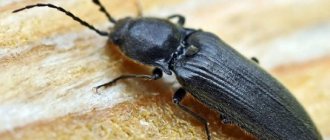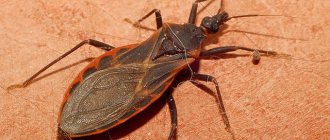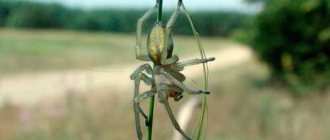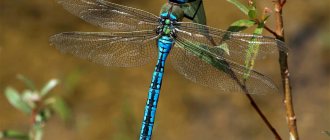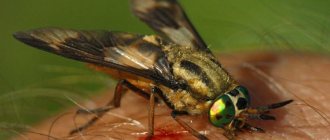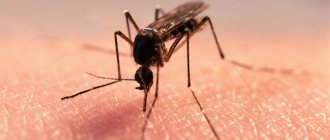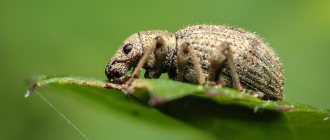After microorganisms and plankton, insects are the most numerous representatives of life on Earth. Most of them are completely harmless and funny in appearance, but there are also those whose meeting does not bode well. Many types of insects cause a real phobia in some people, since their appearance is not only unattractive, but even repulsive. However, the TOP 10 most dangerous insects in the world did not necessarily have to include the most terrible-looking “monsters”; sometimes a harmless bug, ant or caterpillar, which looks quite attractive, can pose a much greater threat to human health and even his life.
Red cockroach
These “pets” are ubiquitous, choosing to live in warm spaces near food and water. They feed on human products, and in the absence of such, they can eat paper and leather products. The red cockroach is dangerous because, moving through different areas of residential premises, including garbage cans, sewers, etc., it carries many dangerous bacteria and helminth eggs. Such a neighborhood threatens a person with the development of various diseases, including: dysentery, meningitis, salmonellosis and others.
Bed bug
Refers to insects that parasitize the body of humans and animals. Moves into living quarters to constantly be close to a power source. Bed bugs attack people mainly at night, and during the day they hide in secluded places. The bite of this tiny insect, which is difficult to see, causes unpleasant itching and can lead to allergies.
Army ants
There are a huge number of ant species in the world, and many of them are very dangerous. These include army soldier ants, which are a specialized caste of worker ants and termites. The lack of vision only makes them more dangerous, because they attack anything that has flesh and blood - a fly, an elephant or a person. These fighters move in colonies and do not build anthills, so getting in their way will be a big deal. This type of ant has a large body, reaching 3 centimeters. They are armed with powerful, long mandibles that easily rip open flesh. Having made a hole, the ants climb into the wound and continue to destroy tissue, which causes incredible pain to the victim. They were even figuratively called “living death.” A colony of such ants could chew up an elephant in a week, and that would be a lot for a person to eat in a day.
Rat flea
This type of flea poses a serious danger to people. Parasitizing mainly rats, they transmit plague bacillus, tularemia, encephalitis and other diseases from animal to animal. And rodents, in turn, easily spread the infection further, infecting humans. In rare cases, fleas bite pets and people. In addition to pain and itching at the site of the bite, a person may experience a headache, increased body temperature and other unpleasant symptoms.
3) Pliers
These small insects are also dangerous to human life and health. Ticks number about 54 thousand species of their family. Some can provoke terrible diseases, while others are deadly. Despite their miniature size, these bloodthirsty insects wait for their prey among the bushes and grass. Many people say that ticks can live on trees, but they are not able to climb to such a height. Not a single species of tick has wings or high legs for jumping. Therefore, such information about ticks is unreliable. The first type of tick crawls under the skin of the victim and feeds using this method. You cannot pull them out yourself, as his head may remain in the body. The second type of tick prefers to bite through the skin after spending a short amount of time on the body. After a bite from such a tick, a mark remains in the form of a small circle or rash. If the first type of ticks is noticeable by its presence on the body, then with the second you need to be more vigilant. After any trip to nature, you need to carefully examine your body. Symptoms of a tick bite vary greatly. The most common symptoms are: headache, chills, increased weakness, aching joints, vomiting, fever, skin rashes, tachycardia and severe itching. Follow-up diseases from tick bites: Lyme disease, tick-borne encephalitis, anaplasmosis, ehrlichiosis, babesiosis, hemorrhagic fever, typhus and tularemia. Also, any tick bite can provoke lack of air, shock, acute tachycardia and loss of consciousness.
Human louse
These small parasites that feed on human blood are of two types, depending on where they are located on the body: head and body. Head lice are practically harmless, although cohabitation with them causes considerable discomfort for people. Their bites cause irritation of the scalp, and various infections can enter through the wounds. The body louse is the main carrier of a deadly disease - epidemic typhus.
What does an elephant eat?
The insect is not selective in food; it consumes leaves, stems, and eats the fruits and roots of the plant. Depending on what the elephant beetle eats, entomologists divide insects into the following groups:
- Monophages are pests that consume strictly one type of plant.
- Oligophages are beetles that feed on garden crops that are similar in appearance.
- Polyphages are omnivores that destroy any vegetation in their path.
These features mainly determine the habitats of weevils.
Some representatives of the species can be beneficial to humans. We are talking about mass destruction of weeds. Such insects are widespread in Brazil and Australia. Several types of useful mowers were brought to Russian territory, where to this day they continue to fight against salvinia, which pollutes water bodies.
Red fire ant
The bite of these insects feels similar to a burn from a fire, which is why they were given this name. This species of ant, which originally inhabited only Brazil, was randomly introduced to different parts of the planet, where it successfully adapted and adapted to life in new conditions. The red ant venom released during a bite can cause an allergic reaction, even death.
Why does a child need this?
Man is a part of nature. But nature also belongs to insects. Today, a person spends most of his time in an apartment, strives to restore order there, and perceives insects as unwanted visitors to his home. Hence the hostility that arises in us, which we experience when looking at these small inhabitants of the planet. Even if we are asked to look at a photo of an insect, unpleasant shivers will probably run down our spine.
Of course, not all insects may be acceptable to us, but children should understand that there are also rare species listed in the Red Book. They cannot be destroyed. Show the children photos of these insects so that preschoolers can imagine what they look like. Perhaps children will never meet these representatives of the fauna in their lives, but they will remain aware that nature must be protected.
Best articles: Seas of the Arctic Ocean - list, characteristics and map
The tasks with photos presented on our website are very colorful and bright. They will interest the child, which gives you a convenient opportunity to develop the children’s creative abilities, memory and thinking.
Nomadic ant
These ants lead a nomadic lifestyle. The whole big friendly family moves from place to place, the journey takes about 2 weeks. The ants make stops only so that the female lays eggs and new members of the community are born from previously formed pupae. The habitat of nomadic ants is the African continent, the countries of Asia and South America. The bite of such a nomad is fatal only to people prone to allergies. Another nuisance from these insects is that they sweep away everything in their path, including livestock.
Wohlfart fly
These insects are common in southern Europe and Russia, northern Africa and China. They belong to the gray blowflies, which are characterized by reproduction in animal corpses. It is this feature that poses a threat to domestic animals and humans, since the fly can deposit its larvae in a wound, cut, or on mucous membranes. As the larvae develop, they begin to eat living tissue and human muscles. Moving inside the body, they cause pain; swelling and suppuration appear in the place where they settled.
Cordylobia anthropophaga
Another fly whose larvae develop in the human body. This type of fly is widespread on the African continent and in Saudi Arabia. The insect lays its eggs on sand or on clothing soaked in urine or sweat, and the larvae patiently wait for their future host. Upon contact with human skin, they begin to actively screw into it, as a result of which tropical myiasis develops on the body. Thus, the larvae stay in the human body for up to 15 days, and then they emerge and go to pupate in the ground.
TOP 25: The most dangerous insects in the world
The millions of insect species that exist today play an important role in our ecosystem. There's nothing to be done, we need them. Although most insects are harmless, some are quite good at carrying out diseases, injecting poison, or simply being a nuisance. We don't really like insects, but we especially don't like dangerous ones! From the bullet ant to the tsetse fly, here are the 25 most dangerous insects in the world. 25. Termites
Photo: commons.wikimedia.org
Although they are not dangerous in the traditional sense of the word, since they play a critical role in maintaining the environment and some types of crops, they can cause serious damage to crops and infrastructure.
24. Lice
Photo: commons.wikimedia.org
Lice are wingless carriers of infection that feed on the blood on the host’s body or other body secretions. On average, 15 different types of lice live in people's hair. Although, like termites, they are not always dangerous to humans, they do have the ability to transmit disease.
23. Deer ticks
Photo: WikipediaCommons.com
Every year, deer ticks infect thousands of people with Lyme disease. This disease begins with a rash forming around the bite, shaped like a bull's eye. Early symptoms include headache and fever. Over time, the patient develops joint stiffness and heart problems. Not many die from the disease, but their suffering can continue for years.
22. Nomadic ants
Photo: commons.wikimedia.org
Nomadic ants are known for their aggressiveness, especially as predators. Unlike other ant species, these do not build their own permanent nests. Instead, they form colonies that move from one place to another. During the day, these predators constantly move, hunting insects and small vertebrates. The entire colony can eat up to 500,000 insects and small animals every day.
21. Wasps
Photo: commons.wikimedia.org
While most wasps are nothing more than pests, some species, such as the German wasp from North America, are brazen and aggressive. If provoked, they can sting many times, and the sting of such a wasp is very painful. They can even remember and haunt those who provoked them.
20. Black Widow
Photo: commons.wikimedia.org
When people think of dangerous spiders, one of the first to come to mind is the Black Widow. The female's bite can be very dangerous to humans because it contains neurotoxins. But, if you immediately seek medical help, the consequences of the bite may be limited only to pain.
19. Megalopyge caterpillar
Photo: PxHere.com
Although they look like cute furry creatures and are called cat caterpillars, don't be fooled. Hidden under the “fur” are spines that, when in contact with human skin, cause a very painful reaction, followed by chest pain, numbness or difficulty breathing.
18. Cockroaches
Photo: Pixabay.com
Cockroaches are one of the most common carriers of various infections, and many of the diseases they transmit can be very dangerous for people. And here's a fun fact - cockroaches can go for months without food or water.
17. Parasitic worms
Photo: WikipediaCommons.com
Parasitic worms are a type of eukaryotic parasite that feed by absorbing nutrients from their hosts and sucking their blood. It is known that most parasitic worms live in the human digestive tract and lead to insomnia, vomiting, nausea and many other problems.
16. Bed bugs
Photo: WikipediaCommons.com
This insect, parasitic on humans, has existed for a long time. Although tick bites may not cause death or excruciating pain, they can trigger negative psychological reactions and allergies.
15. Human skin gadfly
Photo: commons.wikimedia.org
The human gadfly lays larvae that can be life-threatening to humans. The larvae of the botfly, also known as the torsal fly or American cod fly, can be carried by mosquitoes and ticks. When a mosquito carrying a botfly larva lands on the skin, it drops the larva and leaves it behind. After a few days, this larva develops under the layer of skin and can cause a serious infection if not removed immediately.
14. House centipede
Photo: WikipediaCommons.com
House centipedes are known for their pair of poisonous claws. Their bite is considered dangerous to humans because it is very painful and can cause severe swelling that does not subside for several days.
13. Spitting black fat-tailed scorpion
Photo: commons.wikimedia.org
Although they don't quite fit into the beetle category, spitting black fat-tailed scorpions are among the most venomous of the scorpions. Most of them live in South Africa, especially in the desert. They are best known for their thick tails and thin claws. These scorpions have the ability to “spit” venom through their tail. In humans, the bite can cause paralysis and death.
12. Predators
Photo: commons.wikimedia.org
These parasitic insects are known for transmitting Chagas disease and often infect people living in poor, rural areas of America.
11. Bullet Ant
Photo: commons.wikimedia.org
Called the bullet ant because its bite on its victim is often compared to being shot from a pistol, the ant can bite a person, resulting in a sharp, throbbing, and unrelenting pain that can last for more than a day.
10. Brazilian wandering spider
Photo: Pexels.com
Another name for the spider is Phoneutria. These insects live in the tropics of South and Central America. In 2010, the Guinness Book of World Records named this species of spider the most poisonous in the world due to the toxicity of the venom.
9. Malaria mosquito
Photo: WikipediaCommons.com
Known as the main vectors of malaria, these mosquitoes are responsible for numerous epidemics in tropical regions of the world.
8. Rat fleas
Photo: WikipediaCommons.com
Rat fleas are parasites that live on rodents and are the main carriers of bubonic plague. They also serve as hosts for tapeworms, which transmit life-threatening diseases to humans through the eggs they lay.
7. African honey bee
Photo: commons.wikimedia.org
African honeybees are more commonly called "killer bees" due to their ability to kill humans when they attack them. This type of bee is known to defend itself better than others. A swarm of them infiltrates a European honey bee hive, invading and replacing the former queen with their queen, killing the latter. They are very numerous and seem ready to kill anyone who threatens their hives.
6. Fleas
Photo: commons.wikimedia.org
Although not generally considered dangerous, fleas transmit numerous diseases from animals to humans, and throughout history they have contributed to epidemics such as the bubonic plague.
5. Solenopsis
Photo: Pixabay.com
They are a species of stinging ant that can be identified by their copper-brown head and dark belly. When these insects bite, they release formic acid, which causes irritation, pain and, in extreme cases, death.
4. Brown recluse spider
Photo: WikipediaCommons.com
This spider does not produce neurotoxins like the Black Widow, but its bite destroys tissue and can cause damage that takes months to heal.
3. Ant Dorylus
Photo: commons.wikimedia.org
Moving in columns, these ants are very reminiscent of nomadic ants. They have very powerful jaws and typically leave two puncture wounds. Although they do not kill humans, in large numbers they can easily kill or immobilize small animals.
2. Giant Japanese or Asian hornet
Photo: commons.wikimedia.org
Most of these hornets are found in rural areas of Japan and are also called the "giant passerine bee." This type of hornet is not aggressive by nature and attacks people only when threatened. However, their venom is dangerous to the nervous system, and one bite can lead to death.
1. Tsetse fly
Photo: commons.wikimedia.org
Also called "tik-tik", tsetse flies are large, biting flies that live by feeding on the blood of vertebrates. These flies live in mid-continental Africa, especially near the Sahara Desert. They are carriers of parasitic organisms - trypanosomes, which cause sleeping sickness in humans.
Megalopyge opercularis
This hairy caterpillar of one of the moth species recently began to be called Donald Trump's caterpillar, for its resemblance to his hair. But the cute and fluffy appearance of this insect is deceiving. The fur, under which the caterpillar's body is hidden, consists of hairs with poisonous spines. If a person decides to pet a caterpillar, he risks receiving a powerful toxic injection. Upon contact with human skin, the thorns dig into it and break, and the poison causes a severe burning sensation. Particularly susceptible people may experience dizziness and vomiting. These insects are common in the USA, Mexico and northern Central America.
Fat-tailed scorpion (Androctonus australis)
Scorpio is one of the oldest inhabitants of our planet. These arachnids have existed for 400 million years, and they feel great. Predators among insects, they prefer to hunt at night. Strong front claws grab and hold prey, and the tail sting injects venom into the caught insect or small animal.
Best articles: Baleen whales: classification, description, nutrition, behavior and threats
A scorpion bite is always unpleasant, but there are some whose venom is comparable to that of the most dangerous snakes. Meeting and contacting such an insect is very dangerous!
In the Middle East and northern Africa, in arid areas, there is a thick-tailed scorpion, a drop of venom of which can kill a person in 5-7 hours. This is a powerful animal, up to 10 cm long, dark brown or black in color. It bites a person most often in case of defense - when penetrating into his zone of influence.
Scorpion venom has a paralytic effect, comparable to a cobra bite. After a few hours, general muscle paralysis begins and everything can end in cardiac arrest if the antidote is not administered in time.
Gadfly
This insect is a large parasitic fly. There are more than 170 species of gadflies worldwide, of which only one will attack humans - Dermatobia hominis, which lives in Central America. It is a common misconception that gadflies bite very painfully. In fact, they have neither a mouth nor teeth, so this is simply physiologically impossible. The danger of these insects lies in their larvae, which at the initial stage develop only in the body of a person or mammal. Once in the body, the larvae begin to actively eat flesh and muscles, causing myiasis.
Rove rove
This refers to a whole family of narrow short-winged beetles (equipped with undersized wings). They are no more than 5 mm in size. Various shades of yellow-red-brown. The harm lies in the product of their secretion organs, which contains quinones - substances that cause an extremely offensive odor. And these are dyes that are not so easy to wash off. It is easier to encounter rove beetles in rotten foliage (after all, this is where they feed). And they live everywhere.
Lonomia obliqua
The caterpillar of a butterfly from the peacock eye family can be found in tropical forests, orchards and village gardens in some Latin American countries. The caterpillar's body is covered with poisonous spines that easily pierce human skin. After contact with lonomia, a toxin enters the bloodstream, reducing its clotting ability. After a short period of time, a person develops internal bleeding, hemorrhage in organs, including the brain, which can be fatal.
Triatomine bug
Because of the way it bites in the area near the lips, this bug is called a kisser. Triatomine bugs live in Central and South America. This blood-sucking insect is a carrier of dangerous parasites that cause Chagas disease. After the “kiss,” a person may experience the first symptoms of the disease: fever, headache, swollen lymph nodes, and others. After a few weeks, the disease enters the chronic stage. At an early stage, it responds well to treatment, but in the absence of medical care it can lead to the death of the patient.
Caterpillar lonomia
Lonomia caterpillar
Once a year, at the beginning of summer, harmless moths living in the humid forests of South America produce offspring. They lay tiny eggs in the crowns of trees, from which larvae soon hatch. Then “lazy clowns” are born - this is what the aborigines call the most poisonous caterpillars on the planet.
Interesting: Insect self-defense - description, photos and videos
The 7 cm long creature is colored brown-green, which allows it to perfectly camouflage among plants. Features of the insect are a white spot on the back, resembling the letter U, and thin bristles covering the body. Each of them has cavities through which poison passes, destroying fibrinogen, a protein contained in human blood plasma.
The slightest touch to a dangerous creature can be fatal. Sharp thorns instantly pierce the skin, and after 12 hours signs of poisoning appear: chills, malaise and headache. Lack of medical care threatens the victim with disruption of the central nervous system, kidney damage and internal bleeding. From 10 to 30 people die annually from poisoning with lonomia toxins.
Wasp
This name unites a small group of insects from the suborder Stem-bellied. They are distributed throughout the globe, except Antarctica. Almost all wasps have a poisonous sting, which, unlike bees, does not deteriorate after the first use. A person stung by a wasp will feel a sharp pain in the place where the sting penetrated. Redness and swelling also occurs there. For people with allergies, the consequences of a bite can be more serious, even fatal.
Hornets
An ordinary summer resident may encounter the common European hornet. This is one of the most poisonous insects found in our latitudes. This kind of acquaintance is unpleasant. Hornets are quite aggressive, have a large body and powerful mandibles (jaws) with which they can bite.
If you are bitten by a hornet, use the tips in the section about bees and be sure to consult a doctor.
Horsefly
These large flies live on every continent except Antarctica. Being blood-sucking, horseflies actively attack domestic animals and people. The insect's saliva contains toxic substances and anticoagulants, so the bite site in humans does not heal for a long time, and the wound may bleed. A horsefly bite causes burning pain and swelling, and in some cases can cause an acute allergic reaction. It has been scientifically proven that horseflies are carriers of dangerous diseases, including tularemia, tick-borne encephalitis, anthrax and others.
Malaria mosquito
From the name it is clear what disease this insect spreads. The existing malaria vaccine is ineffective; about 500 thousand people die from this disease every year. Mosquitoes live almost all over the globe, except Antarctica. The most dangerous species in terms of transmitting infectious diseases inhabit tropical areas. The largest number of infected people are recorded in African countries, mainly children under 5 years of age.
Bullet Ant
One of the most dangerous representatives of the ant family. It has a toxic poison in its arsenal that can’t be compared to wasp or bee poison. These ants live in large families in the tropical forests of Central and South America. The bullet ant's sting is considered the most severe on the Schmidt sting scale. A person may experience pain for 24 hours. Swelling also forms at the site of the bite, and temporary numbness of the bitten limb is possible.
Invasion of poisonous ants
- After meeting on the paths of the tropics with the largest ant in the world, a very painful memory remains. The insect was nicknamed the bullet ant for its longest sting (3.5 mm), which is longer than the body of the insect itself.
- The harvester ant from America has the most toxic poison in the world. When attacking a victim, it grabs it with its pincers to inject a copious portion of poison. The pheromones released in this case become a signal for relatives.
- American Siafu ants managed to occupy even the tropics of Asia. The bite of the most terrifying-looking insect can be fatal, especially for the youngest or oldest people.
Vespa mandarinia
It belongs to the family of true wasps, being the largest representative of the hornet genus. It lives in Asian countries and in the eastern part of Russia. Hornets attack people extremely rarely, only for the purpose of self-defense. The extremely painful bite of this insect causes swelling, redness, can provoke an allergic reaction, and, as a result, lead to death. Simultaneous bites from several individuals at once can kill even a healthy person who does not suffer from allergies.
Regular or black T-shirt
About 30 mg of poison, which is contained in the blood of this beetle, will be enough to kill a person. If this poison gets on the skin, burns and blisters will appear that do not heal for a long time. If the poison gets into the blood, it will lead to disruptions in the functioning of the gastrointestinal tract, kidneys, and liver. Mikes mainly live in the Caucasus and southern regions of Russia. In the middle zone you can find no less dangerous varieties of these beetles - a rich green Spanish fly and a beetle that resembles a ladybug, only with an elongated body. It is better not to come into contact with these insects. But if suddenly their secretions do get on the skin, this area should be washed quickly and well with soap and water. And monitor your condition: if you start to feel dizzy and feel nauseous, consult a doctor immediately.
Pogonomyrmex maricopa
An ant soaked in poison is ready to sting without warning. It will methodically bite its victim until it dies. Ants of this species live in North America. The strength of their sting on the Schmidt scale is close to maximum. It is noteworthy that when an ant deals with its victim, in addition to toxic substances, its venom releases a special alarm pheromone, notifying other members of the colony about the danger and calling on them to unite in the fight against the enemy. For a person, such an organized attack can be deadly. A bite from just 1 individual will cause severe pain, which can last up to 4 hours.
Apis mellifera scutellata
The artificially bred bee turned out to be one of the most dangerous insects. Scientists obtained this species by crossing African and some European species of bees. Due to the strength of their poison, aggressiveness and frequent attacks on people and domestic animals, they are called killer bees. They account for more than one human life. They live in the USA, South America, Brazil, annually exploring new territories. The sting of 1 bee will not lead to the death of a person, but an attack by a group of killer bees will leave no chance of salvation.
Asian shemale
In Asia you can meet a very dangerous insect - the Asian bumblebee . It is difficult not to notice because its dimensions are impressive - 5 cm in length and wingspan - 7.5 cm. With its 0.6 cm sting, the bumblebee can sting many times in a row. In terms of pain, its bite is comparable to that of having a hot iron applied to the body. In addition, the poison has a specific smell, by which other bumblebees find the same victim and attack.
